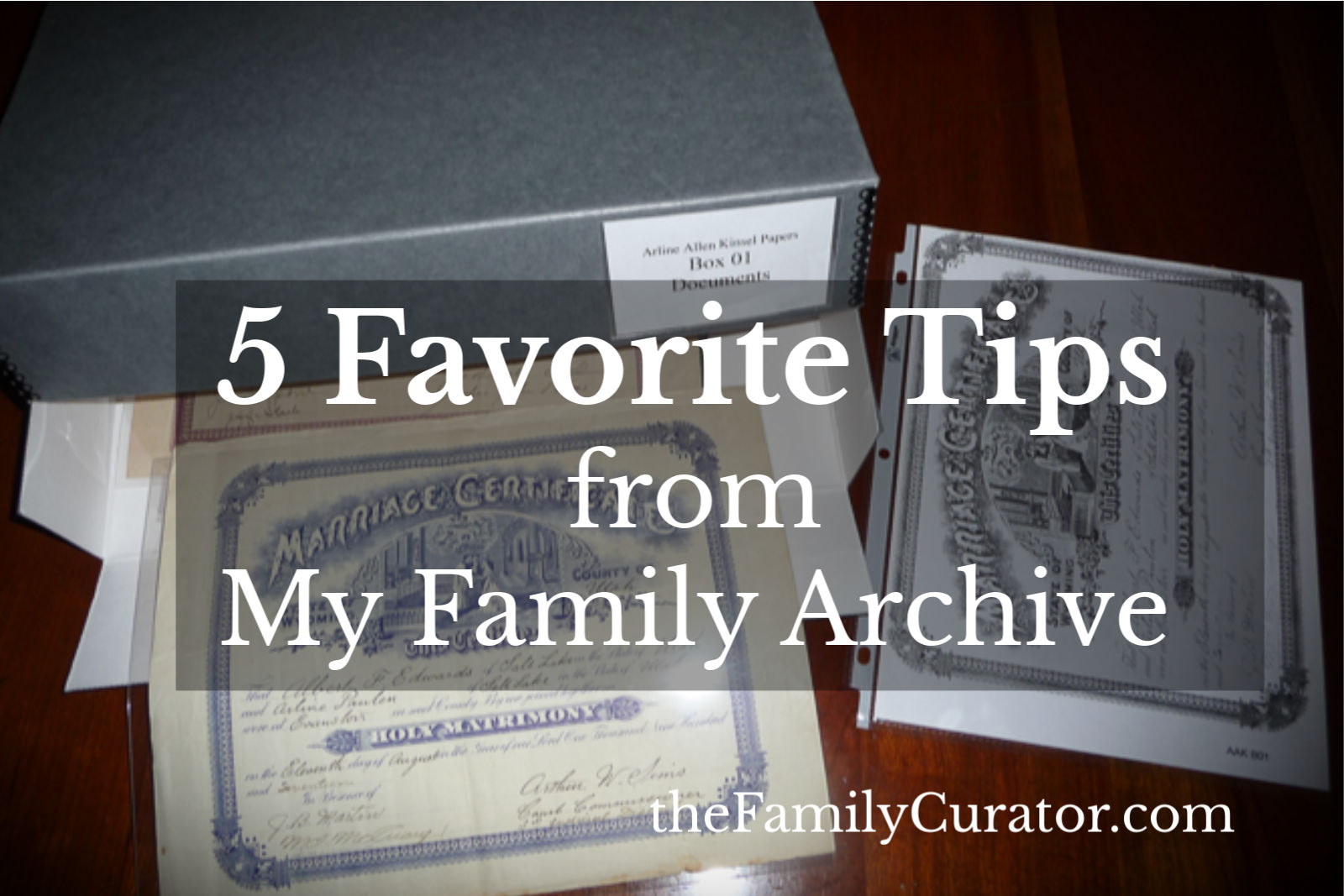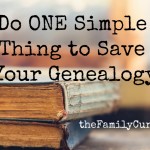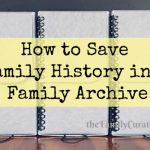
Most people think of resolutions and diets in January of a new year. Genealogists think about organizing their files and research.
Since moving houses last spring, I’ve been working through files and boxes to relabel, rehouse and rethink some of my earlier organizing strategies.
I’ve discovered that I need better access to items I use frequently, such as interesting artifacts for teaching and blog photos. Some other materials, like family letters and papers, need to be scanned in groups so that I can work with the information in my personal genealogy research.
Overall, my new Family Archive closet is working out well, although I do have an overflow to two other storage areas! Maybe I need another round of sort and scan, or an interested family member to work with me on a few projects.
Advice from the Archive
Here are a few favorite tips from my original Family Archive:
1. Standardized Storage Boxes
Use multiples of standard box sizes. This is probably my favorite archiving tip of all. My first purchase of acid-free archival boxes included a mix of different shapes and sizes. I wanted to see what worked best for me. It was immediately obvious that the boxes that fit my storage shelves were the easiest to handle. Mixed up shapes and sizes are more difficult to store. Now I buy gray document case cases and 12 x 15-inch drop front flat boxes that stack easily and store all kinds of papers. I like shoebox-size boxes for photos and artifacts and large acid-free archival bankers boxes for items waiting to be processed. Choose a size that fits whatever you need to preserve and that fits your storage area. (Find links to many items on my Shop page and also at Amazon and archival suppliers.)
2. “Just the Right Size” Document Cases
Document cases are like mini-file cabinets. Archives and libraries use them to house papers for easy access. The boxes fit neatly back on a shelf in the climate-controlled archive room and can be retrieved on a cart for researchers as needed. At home, document cases are useful to organize and house family papers, but the wide seven-inch boxes can be heavy to move off a top shelf. Narrow boxes less than five-inches will organize a small collection, but I’ve found the five-inch width document case is “just right” for most of my papers.
3. Archival Plastic Label Holders
Yellow sticky notes, tape, or glue are never a good thing for preservation storage, but every box needs a label. Oh, how I like these little label holders that stick on the side of my archival boxes. Box contents can be listed on the acid-free card and easily inserted into the plastic sleeve. When files are rearranged, it’s easy to change labels with a new card.
4. Coated Wire Shelves
My Family Archive includes papers, photos, and all kinds of artifacts. I have clothing on padded hangers inside Tyvek garment bags, boxes with textiles, photo albums, oversize documents, rolled photographs, film, and more. It doesn’t all fit in one space. I keep my “active” files, the letters or photos I’m currently sorting for scanning, in the most accessible storage space which I a closet in my office. To maximize storage shelving, my husband helped me measure and install coated wire shelving that almost exactly fits the closet. The shelves are moveable and the air circulates around the boxes so I know they aren’t sitting on an old wooden closet shelf that might cause problems from the acidity of the wood. Wire shelf systems are available at The Container Store, Home Depot, and Lowe’s.
5. LED Lighting
A small worktable inside the closet adds a place to hold items or boxes when I need to find something quickly. An under-counter LED light mounted on the shelf above the table makes it easy to see inside the closet’s diim light. Simple, but effective.
Do you have a favorite tip from your own Family Archive? Leave a comment below and share your ideas with other family curators.
Disclosure: Thank you for supporting The Family Curator website by shopping with the affiliate links on this site. There’s no extra cost to you, and your support helps keep this website free to all readers. Read full Disclosure.






How about a picture of your archive closet for some visual inspiration? Thanks for the great info!!
Good idea for another blog post! Thanks.
Learning from you about thin folders that fit inside regular file folders to separate items has been a big help to me as I sort family letters. Multiple correspondence on the same subject or by the same author or in the same year can be grouped and separated, but be together in the same folder. The Family Curator over the years has been a gold mine of useful information for this family archivist and I appreciate it.